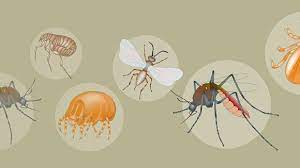Table of Contents
Embarrassing, buzzing flies tend to appear at the most inconvenient moments. These animals are drawn to any warm-weather outdoor gathering, and they loiter around the door, hoping to get inside. No amount of slapping and flailing will make the flies go away.
Fly swatters, fly tape, electronic fly traps, and the humble dish towel are all ineffective in eradicating these annoying bugs. So, what exactly are they for? Flies, on the other hand, provide a variety of vital functions.
There are about 110,000 species of true flies, which belong to the Insecta order Diptera. These fly pollinate a variety of plants, including the cacao tree, which produces chocolate. True flies serve as predators, parasites, and prey in the ecosystem.
Decomposers include certain true flies, especially while they are in their larval stages. In the course of their regular activity, certain Diptera members, particularly house flies and mosquitoes, transfer illnesses.
Any other name for it
A few species don’t fly and instead dwell as parasites on islands or in alpine regions. Crane flies to fruit flies, as well as bee mimics like bee flies and hoverflies, and the ever-annoying friendly flies, midges, blow flies, and face flies, are all true fly species. House flies and mosquitoes are two of Diptera’s most well-known members. True flies, despite their image as disease-carrying annoyances, play an important function in nature.
Pollinators who aren’t the same as the ones you’re used to

True flies are important pollinators for a wide range of plants. Bee flies, hoverflies, and other bee-like flies fly from one bloom to the next. While not as effective as actual bees at transporting pollen, these flies serve as pollinators for plants that bees may not visit.
You may also like to read: “Is it true that cats are cleaner than dogs as pets?“
Many of the flowers pollinated by flies lack nectar, making them unattractive to bees. These blooms come in a variety of colors, from drab to scarlet to brown and purple. Their floral shape can be complex, and their aroma, which smells like rotting meat, is typically terrible. The flies are unconcerned. True flies pollinate the following plants:
• ginger (wild)
• trillium red
• catnip
• paw-paw
• cabbage skunk
• a few orchids
• jack-in-the-pulpit
The cocoa tree’s seed pods would not grow if small midges were not used to pollinate it.
Predators and Prey are predators and prey, respectively.
True flies have a variety of functions in the food chain, including predator and prey. Many birds, fish, mammals, and other insects rely on flies as a source of food. Fishermen research game fish eating behaviors in order to choose the best fly lures for the time, location, and fish they’re after.
The friendly fly, also known as the meat fly or the government fly, feeds on forest tent caterpillars, whereas hoverfly maggots feed on aphids. Fruit flies consume yeast cells that cause the fruit on the counter to rot.
Decomposers with a Purpose

Flies and their larvae are part of nature’s cleanup team, as unpleasant as they may appear. For example, blow flies deposit their eggs in rotting corpses. The maggots eat the rotting flesh and aid in the breakdown of the organic substance into its constituent parts.
The nutrients are released back into the soil as a result of their digestive processes.This nutrient-rich manure plays a crucial role in maintaining ecological balance by enriching soil health. Flies serve as important decomposers, breaking down organic matter and recycling nutrients essential for plant growth.
Other flies put their eggs in dung so that their maggots may feed on it and break it down. This not only accelerates decomposition but also ensures that nutrients are efficiently returned to the ecosystem. These decomposers finish the food chain by releasing nutrients for use by plants, bacteria, and fungi, thereby supporting both flora and fauna.
In this way, flies contribute significantly to the food chain, linking various ecological components and promoting biodiversity. Their role goes beyond mere decomposition, as they help sustain the overall health of ecosystems by influencing nutrient cycles and soil fertility.
Vectors of Disease

Some flies transport illnesses from one location to another. House flies can fly up to two kilometers without exerting any effort. A fly that went through a mound of dung in a barnyard could easily go through a picnic plate. House flies and mosquitoes have deservedly acquired their reputations as disease vectors.
Anthrax, dysentery, and typhoid fever are all illnesses carried by house flies. Malaria, yellow fever, and the Zika virus are all transmitted by mosquitos. Disease-carrying insects such as the Mediterranean fruit fly, which are less well-known, wreak havoc on crops. The transmission of illness, on the other hand, is a consequence of the real flies’ normal activities.
So, why are they doing it, and what do they hope to achieve?

Flies are one of the most varied insect orders, with over 150,000 species classified into more than 150 insect families worldwide.
Entomologists (scientists who study insects) believe that there are over 30,000 species of fly in Australia , although only 7,700 have been identified.
Global and Regional Diversity
Belonging to the Diptera order of the insect family, there are more than 110,000 species of flies. North America has 18,000 species alone, showcasing the region’s significant share of the global diversity.
This impressive variety highlights the adaptability and ecological significance of flies across different environments. Whether in the buzzing cities or remote countryside, these creatures play vital roles in ecosystems worldwide.
All of the other flies in the area, including mosquitoes and horse flies, are most likely wanting your blood. Unfortunately, some people are more appealing to mosquitos than others.
Although the carbon dioxide we exhale attracts mosquitoes and other blood-feeding insects, we know that the insect sensory system also aids in the detection of exposed skin. One reason flies swarm about your face and hands is because the flesh surrounding our faces is frequently exposed.
Bite components of the mouth

The proboscis of a mosquito is sharp and needle-like, but the proboscis of a deer fly (also known as a horse fly or march insect in Australia) has a huge, wide spike.
This parallels the varied feeding methods observed in flies: mosquitoes utilize a hypodermic needle and are so picky about where they bite that researchers have discovered capillaries beneath the skin.
You may also like to read: “Discover How to Steam Clean Carpets?“
As most people are aware, mosquito bites may be extremely irritating, and the proteins transmitted during a mosquito bite can induce anaphylactic shock in rare circumstances.
Horse flies utilize a “slash and suck” strategy, in which they slash the skin and then drink the blood. Of all the insects, these bites are my least favorite.
Biting midges (Diptera: Ceratopogonidae) are blood-feeding insects (Diptera: Ceratopogonidae) that are known vectors of minor human infections and significant veterinary diseases in cattle. Their bites are quite irritating as well.
Fruit flies and house flies utilize a somewhat different method: their mouthparts are sponge-like, and they vomit a combination of digestive enzymes onto the surface they’re feeding on, then drink the liquid that results. Humans are not bitten by them, despite their annoyance.
Taking part in the adventure
The most serious issue with fly bites isn’t the pain or irritability of the wound; it’s the diseases that the bug may spread through its bite. Three conditions must be present for a vector-borne illness to spread:
1. the illness
2. the disease-transmitting bug
3. the vertebrate that serves as a host.
In the case of some illnesses, such as dengue fever, Australia has the insect but not the virus. Dengue fever outbreaks arise when someone brings the virus into the nation, where it is subsequently transmitted by mosquitoes already there.
When looking at the number of dengue virus infection notifications, it’s clear that Queensland has the most instances.
But how does it alter when population size is taken into account? The tropical parts of Australia (the Northern Territory, Western Australia, and Queensland) are by far the most at danger when it comes to the number of notifications per 100,000 persons in the population. That’s because those are the places where the sickness, the insect that spreads the disease, and people are most likely to be found.
Flies vs. humans

How can you lessen your chances of being bitten? Topical insect repellents containing DEET or picaridin are the most effective in preventing mosquito bites. Mosquito repellent wristbands have been proven ineffective, and botanicals seldom, if ever, give the same amount of protection.
This may not be an issue for nuisance flies, but for insects that can transmit human illness, your best bet is to eliminate all standing water from outside your home and remain inside as much as possible at sunset.
To finish their lifetime, most blood-feeding flies, like mosquitoes, take opportunistic blood meals. Females must have a blood meal in order to produce eggs. Female mosquitos in some species are not discriminating and will feed on the blood of a variety of animals.
Only nectar or pollen is consumed by adult males and females. Both males and females of tabanids such as horse flies commonly feed on nectar.
When flies descend on a group of plants to feed on nectar, they distribute pollen across blooms, assisting in the fertilizations of the following generation. Flies have an important part in the biological ecosystem for our native plants as pollinators, and they also assist farmers.
Non-bee pollinators, such as flies, play an essential part in crop pollination across the world, according to new study from Australian experts.
So, the next time flies descend upon your picnic, bushwalk, or barbeque, remember that they may have assisted in the preparation of some of the food on your table.




